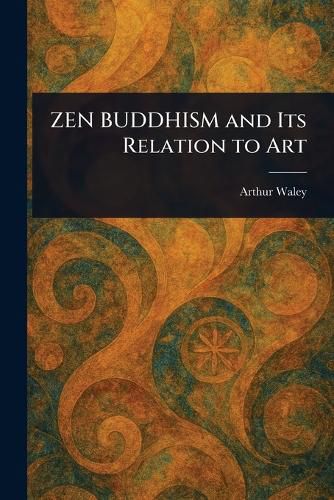Readings Newsletter
Become a Readings Member to make your shopping experience even easier.
Sign in or sign up for free!
You’re not far away from qualifying for FREE standard shipping within Australia
You’ve qualified for FREE standard shipping within Australia
The cart is loading…






This title is printed to order. This book may have been self-published. If so, we cannot guarantee the quality of the content. In the main most books will have gone through the editing process however some may not. We therefore suggest that you be aware of this before ordering this book. If in doubt check either the author or publisher’s details as we are unable to accept any returns unless they are faulty. Please contact us if you have any questions.
Explore the profound connection between spiritual practice and artistic expression in Arthur Waley's "Zen Buddhism and Its Relation to Art." This seminal work delves into the core tenets of Zen Buddhism and its rich influence on various forms of art. Waley, a renowned scholar of Eastern philosophy, illuminates the principles of Zen meditation and enlightenment, revealing how these concepts manifest in visual art.
Readers interested in Buddhist art, Eastern philosophy, and the history of Zen Buddhism will find this book to be an invaluable resource. Discover how the pursuit of enlightenment shapes artistic creation and find insight into the philosophical underpinnings of artistic aesthetics. Whether you're a student of religion, a devotee of art, or simply curious about the intersection of the spiritual and the aesthetic, this book offers a clear and insightful exploration of Zen Buddhism. A timeless exploration meticulously prepared for republication.
This work has been selected by scholars as being culturally important, and is part of the knowledge base of civilization as we know it.
This work is in the public domain in the United States of America, and possibly other nations. Within the United States, you may freely copy and distribute this work, as no entity (individual or corporate) has a copyright on the body of the work.
Scholars believe, and we concur, that this work is important enough to be preserved, reproduced, and made generally available to the public. We appreciate your support of the preservation process, and thank you for being an important part of keeping this knowledge alive and relevant.
$9.00 standard shipping within Australia
FREE standard shipping within Australia for orders over $100.00
Express & International shipping calculated at checkout
This title is printed to order. This book may have been self-published. If so, we cannot guarantee the quality of the content. In the main most books will have gone through the editing process however some may not. We therefore suggest that you be aware of this before ordering this book. If in doubt check either the author or publisher’s details as we are unable to accept any returns unless they are faulty. Please contact us if you have any questions.
Explore the profound connection between spiritual practice and artistic expression in Arthur Waley's "Zen Buddhism and Its Relation to Art." This seminal work delves into the core tenets of Zen Buddhism and its rich influence on various forms of art. Waley, a renowned scholar of Eastern philosophy, illuminates the principles of Zen meditation and enlightenment, revealing how these concepts manifest in visual art.
Readers interested in Buddhist art, Eastern philosophy, and the history of Zen Buddhism will find this book to be an invaluable resource. Discover how the pursuit of enlightenment shapes artistic creation and find insight into the philosophical underpinnings of artistic aesthetics. Whether you're a student of religion, a devotee of art, or simply curious about the intersection of the spiritual and the aesthetic, this book offers a clear and insightful exploration of Zen Buddhism. A timeless exploration meticulously prepared for republication.
This work has been selected by scholars as being culturally important, and is part of the knowledge base of civilization as we know it.
This work is in the public domain in the United States of America, and possibly other nations. Within the United States, you may freely copy and distribute this work, as no entity (individual or corporate) has a copyright on the body of the work.
Scholars believe, and we concur, that this work is important enough to be preserved, reproduced, and made generally available to the public. We appreciate your support of the preservation process, and thank you for being an important part of keeping this knowledge alive and relevant.